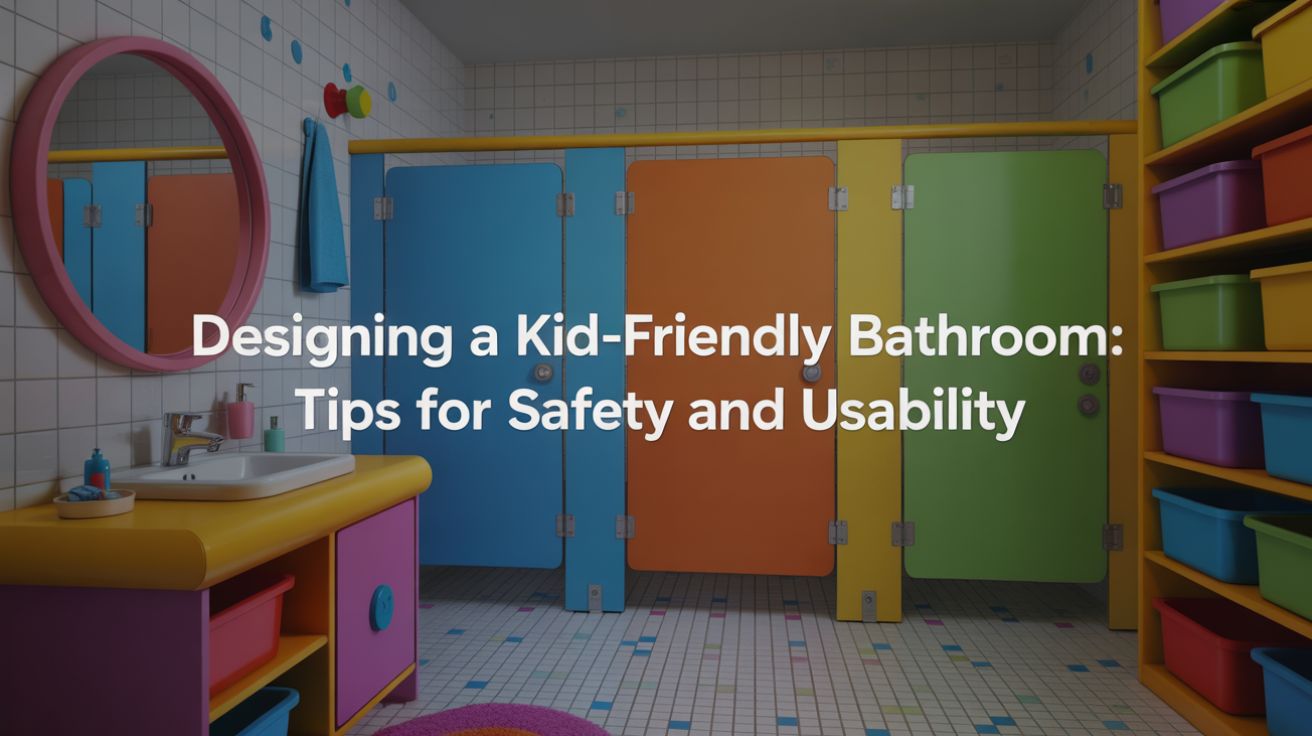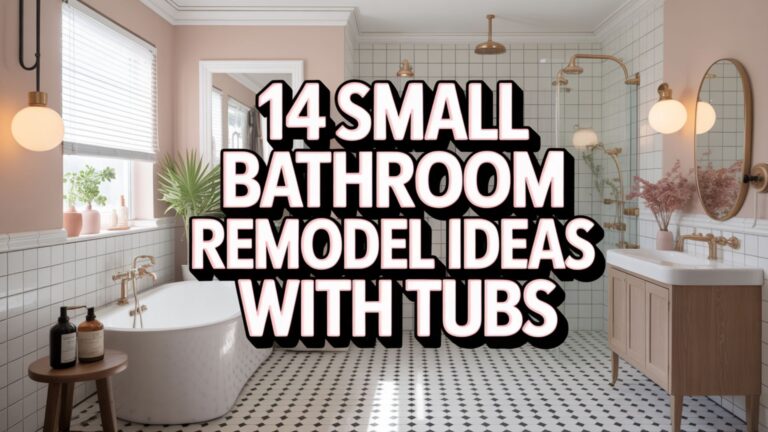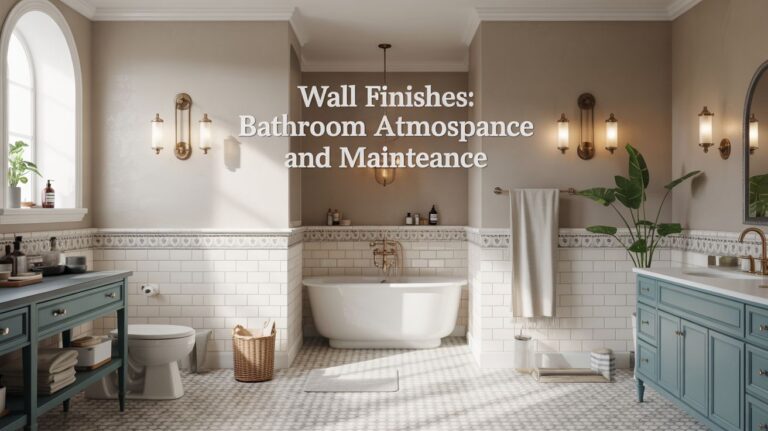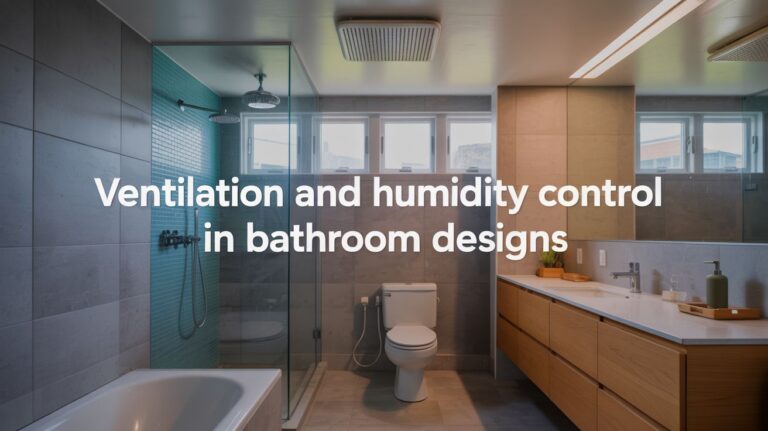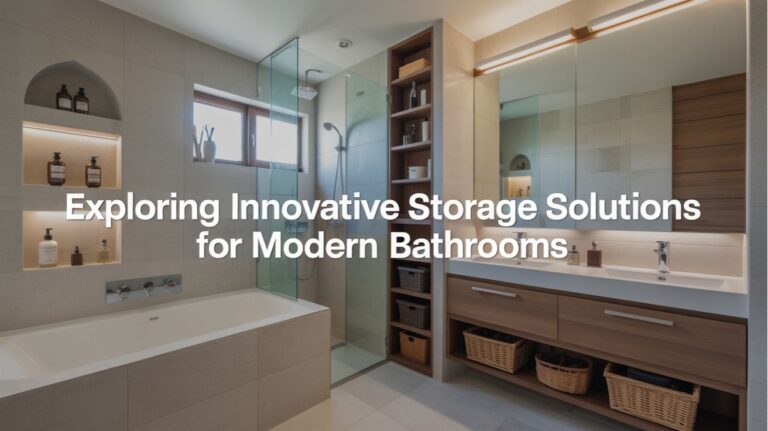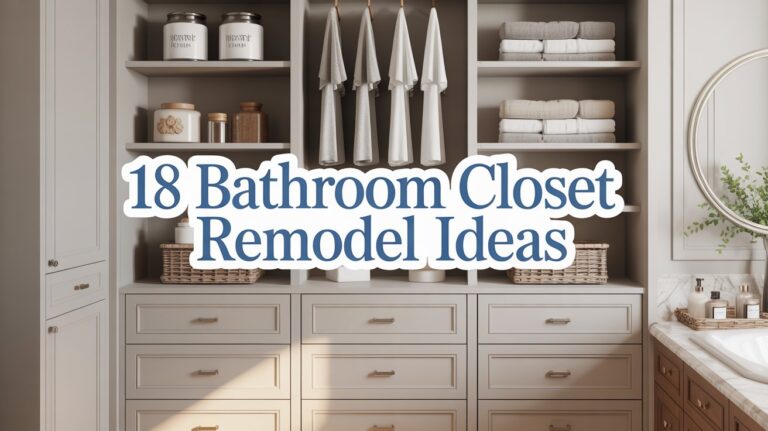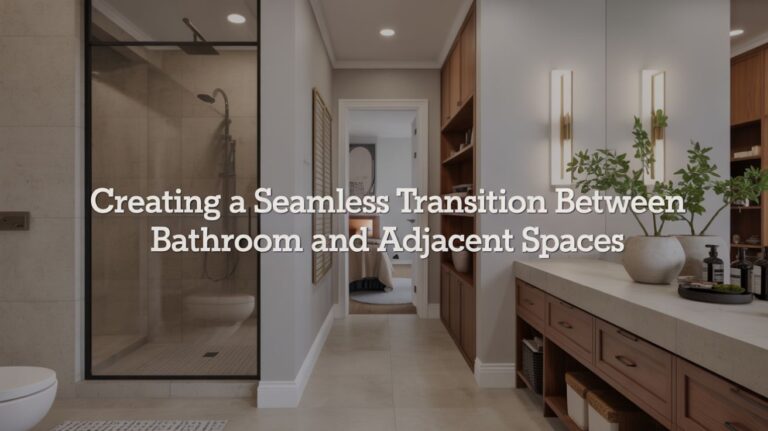Designing a Kid-Friendly Bathroom: Tips for Safety and Usability
I have been, or can be if you click on a link and make a purchase, compensated via a cash payment, gift, or something else of value for writing this post. As an Amazon Associate, I earn from qualifying purchases. Please read my full Affiliate Disclosure for more information.
Design a kid-friendly bathroom with safety and usability in mind by choosing durable, waterproof finishes and slip-resistant, quick-dry flooring. Install height-adjustable fixtures and easy-to-control taps to grow with your child. Use low, open storage with labeled bins and color cues to foster independence, plus grab bars and anti-scald controls within reach. Keep routines simple and playful to build hygiene habits. Regularly inspect grout, seals, and hinges to prevent hazards, and you’ll open safer, calmer spaces as they grow—more tips await.
Key Takeaways
- Use non-slip, textured flooring and mats; ensure quick-drying surfaces to reduce slip and mold risk.
- Install adjustable, reachable fixtures and controls to grow with children, with clear temperature limits and easy reconfiguration.
- Choose moisture-resistant, easy-clean finishes and materials; prioritize simple, quick repairs and maintenance routines.
- Implement low-level storage, labeled bins, hooks, and open shelves for independence and organized routines.
- Add kid-friendly hygiene cues and routines with colorful towels, checklists, and visual guides to reinforce habits.
Safety-First Materials and Finishes
When designing kid-friendly bathrooms, choose materials and finishes that prioritize safety without sacrificing durability. You’ll value non slip tiles and waterproof finishes that perform under splashes, spills, and daily use. Prioritize slip resistance ratings and textured surfaces in wet zones, then pair with durable, easy-clean materials for countertops and cabinetry. Favor rounded edges and integrated seams to minimize snag hazards and hiding places for grime. A color-and-material strategy can aid recognition and wayfinding, while corrosion-resistant hardware reduces maintenance. Document certifications and cleaning guidelines to ensure ongoing safety, selection consistency, and parent confidence, turning design choices into measurable protections.
Height-Adjustable Fixtures for Growing Kids
As your child grows, consider fixtures that adjust to their height, so your bathroom stays usable from toddler to tween. Start with grow-with-child options and set clear milestones for when to raise or lower sinks and mirrors, using data on ergonomic reach times. This approach keeps daily routines efficient, reduces accidents, and centers you both in a design that adapts with you.
Grow-with-Child Fixtures
Grow-with-child fixtures are a smart, long-term investment for families. You’ll benefit from appliances and surfaces that adapt as your child grows, reducing reconfigurations and clutter. Prioritize adjustable-height sinks and showerheads that maintain ergonomic reach without compromising safety. When selecting tubs, choose models with stable bases and easy-to-operate controls to support independent bathing. Emphasize reliable, easy-clean mechanisms to promote consistent usage. Data shows that stable, thoughtfully designed fixtures support safer bathing routines and longer usage. Always consider bathtub safety and water temperature controls, ensuring precise, child-friendly limits to prevent accidental scalding while encouraging independent habits.
Accessible Height Adjustments
Accessible height adjustments make bathroom routines smoother for growing kids. Height-adjustable fixtures reduce bending, reach frustration, and promote independence, backed by daily usage data and family feedback. Use counters, thermostatic taps, and movable showerheads to accommodate height changes without compromising safety. When planning, account for tub and shower transitions, ensuring stable grips and slip-resistant surfaces to support tub safety. Maintain clear sightlines for supervision and privacy considerations, so kids feel secure while still learning autonomy. Prioritize easy reconfiguration during growth spurts and dialog with caregivers about comfort, limits, and routine adjustments. Choose sturdy mechanisms, child-friendly finishes, and clear maintenance steps for lasting practicality.
Slip-Resistant Floors and Splash-Proof Surfaces
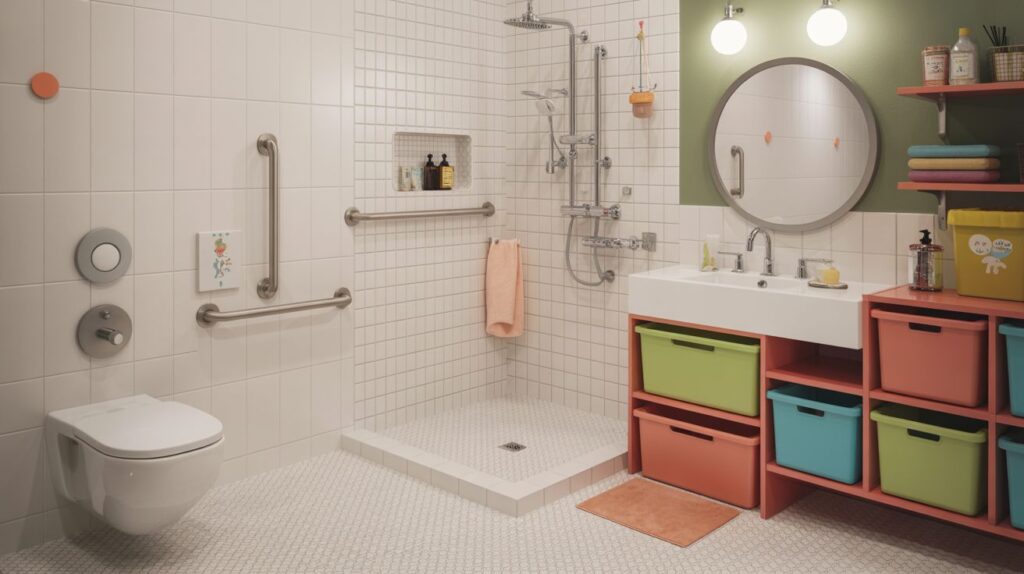
Slip-resistant floors and splash-proof surfaces are essential for a safer, stress-free bathroom for kids and caregivers. You’ll reduce slips with textured, non-slip tiles or mats in wet zones and choose floors that dry quickly. Splash-proof surfaces keep water from seeping behind fixtures, simplifying cleanup and minimizing mold risk. Prioritize bathtub safety by installing resistive coatings around tubs and using secure grab bars within reach. Maintain consistent water temperature with anti-scald controls and clearly labeled knobs. Regularly inspect grout and sealants to prevent slick residue. With practical fixes, you create a kinder, more confident bathroom experience for all.
Kid-Friendly Storage Solutions and Accessibility
You’ll want storage that’s accessible and easy for kids to use, with low-level organization that keeps essentials within reach. Choose safe, durable materials and clearly labeled bins to foster independence while reducing clutter. This approach is data-driven and user-centric, focusing on practical layouts that support safe, everyday use.
Accessible Storage Options
When designing kid-friendly bathroom storage, prioritize reachability, safety, and simplicity so little ones can help with routines without creating clutter or hazards. Accessible storage options keep essentials within arm’s reach and reduce search-time frustration. Use wall-mounted, low-height shelves and labeled, child-friendly bins to encourage independence without bending or climbing. Choose toy storage that doubles as decor, like decorative baskets that blend with your bath aesthetics while staying practical. Favor clear or color-coded containers for quick identification and tidy habits. Pair with moisture-resistant materials and simple, wipe-clean surfaces to support consistent, data-driven routines.
Low-Level Organization
Low-level organization keeps kid-friendly storage practical by keeping essentials within arm’s reach and error-proof. You’ll reduce spills and frustration when items are clearly accessible, labeled, and grouped by use. Use a low, open shelf, a pull-out bin, and wall hooks to create intuitive zones. This setup supports independence and safer routines, guided by real-world needs and data on child autonomy. Include elements like themed wall decor and playful lighting to make storage inviting and age-appropriate without clutter.
- Low open shelves with labeled bins
- Accessible hooks and a small towel bar
- Clear containers for everyday items
Safe, Durable Materials
Safe, durable materials are essential for kid-friendly storage that lasts. You’ll choose surfaces that resist spills, wear, and moisture, prioritizing water-based finishes and smooth edges to minimize snags. Opt for solid wood or high-quality composites with sealed, kid-safe coatings, and avoid porous textures that harbor grime. Eco friendly finishes reduce toxins without sacrificing longevity, while decorative accents add personality without sacrificing safety. Plan modular, rounded storage that’s easy to wipe down and reposition as needs change. Test stability and weight limits, labeling shelves for quick access. With durable, thoughtful materials, accessibility and usability grow naturally for every learner.
Easy Cleaning Routines and Hygiene Habits
Creating easy cleaning routines and good hygiene habits for kids is about simplicity and consistency; when tasks become predictable, kids learn independence without feeling overwhelmed. You’ll establish routines that are fast, repeatable, and fun, supported by kid-friendly products and clear steps.
1) Use fun soap options and short washing steps to make handwashing engaging.
2) Pair daily tasks with colorful towels and a simple checklist to build accountability.
3) Model routines together, praise effort, and gradually increase responsibility as confidence grows.
These practices support healthy habits, reduce mess, and keep bathroom time calm and positive.
Color, Texture, and Visual Cues for Independence
Color, texture, and visual cues matter because they help kids recognize and manage bathroom tasks with less effort. You’ll use color cues and tactile textures to map routines—turning on the tap becomes a color-coded step, while textured handles guide small hands. Visual signals, like door icons and labeled shelves, reduce guesswork and boost confidence. Pair bright, high-contrast hues with consistent placement so patterns stick. Keep everything within reach and clearly marked, so independence feels achievable. Refer to simple, data-informed routines: warm water for washing, soap in the same spot, towels returned to a designated bin. Clarity drives mastery.
Maintenance, Durability, and Family-Friendliness
Maintenance, durability, and family-friendliness aren’t afterthoughts; they’re the backbone of a bathroom kids can use safely every day. You’ll balance upkeep with protection, choosing surfaces that resist moisture and scrapes without sacrificing aesthetic appeal. Prioritize repairs that are quick, visible, and non-disruptive, so daily routines stay smooth. Decorative accents should be robust yet playful, guiding kids without creating slip hazards or clutter. With data-driven decisions, you’ll select storage that’s reachable, durable, and easy to sanitize. You’ll also future-proof for growth, ensuring accessibility stays intact as needs evolve.
- Durable materials and simple maintenance routines
- Accessible, kid-friendly storage and sturdy fixtures
- Safe, decorative accents integrated for aesthetic appeal
Conclusion
You’ve got a solid blueprint for a kid-friendly bath—now make it real with practical steps. Prioritize safety with non-slip floors and rounded edges, choose durable, easy-clean finishes, and install adjustable fixtures so growth isn’t a redesign. Organize accessible storage and label routines to build independence. Keep surfaces splash-proof and routines simple to build hygiene habits. Finally, balance color and cues with durability in mind, so fewer repairs and more confident, self-sufficient bathroom moments for your family.
